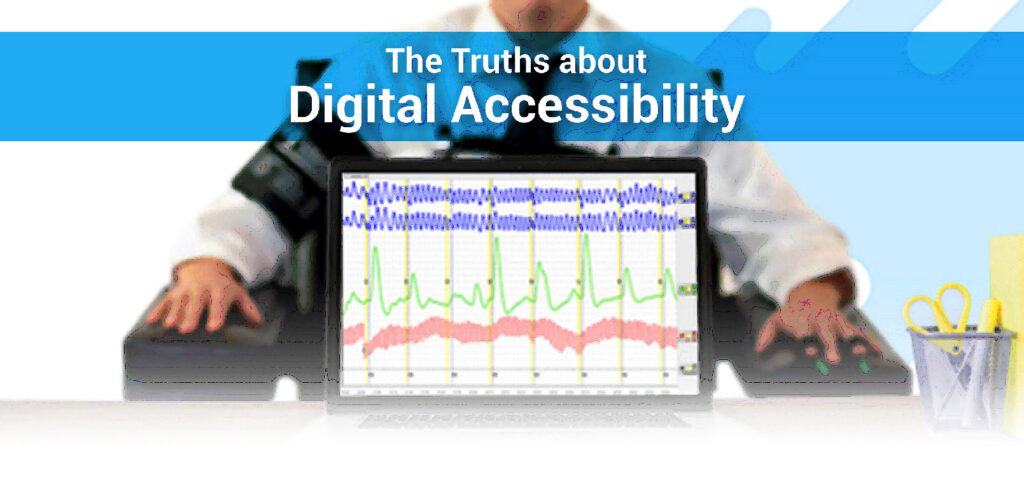Digital Marketing is all around us. Through apps, emails, and social media, organizations are trying to get their message out. Unfortunately, many are missing the mark for about 20% of the population that is disabled. But that is only if they are not following WCAG (Web Compliance Accessibility Guidelines). The ADA (Americans with Disabilities Act) has also increased their focus in ensuring digital accessibility is a reality for all, especially for websites.
If your organization has ever received a demand letter or has been sued because your digital media is not accessible, you understand. If you have not, you may soon learn more than you cared to know. Since 2014, lawsuits have increased 148% for organizations that are inaccessible with over 2200 filed in the United States in 2018. This number is expected to grow exponentially over the next few years.
If you are aware about this emerging trend in litigation, you may have come across the ever-growing space of companies promising to make digital media compliant. Some will sell you that – Boom! Just like that! You can be compliant! Or that no matter the size of your site, the minimum cost will be your left kidney and if that isn’t enough, more organs may be needed. Let’s address some of the misconceptions that you may come across when addressing digital accessibility:
Digital Accessibility is only about ensuring access for the blind.
- FALSE: Digital accessibility is for anyone that may have a disability that does not enable them to access the content in digital media. To do so the website has to follow WCAG standards. Of course, a large percentage of the disabled population are the blind, but the WCAG standards also ensure accessibility for individuals with the following; color blindness; dyslexia; cognitive issues; quadriplegia; neurodegenerative disorders
The Majority of digital accessibility infractions/violations can be identified by auto scanning tools.
- FALSE: According to the US General Services:
“Automated scanning provides an important first-pass ‘screening’ that can identify if a website is not accessible or does not comply with accessibility standards by testing for the absence of valid required elements and/or attributes.”
In addition, the best tools used for automated scanning only catches up @40% of the violations as cited by Mehmet Duran in an article published on February 24, 2017 in GOV.UK.
Link to Study
Auto scanning is simply not enough. A manual test by a human is really an important step in capturing violations that plague digital media. In the same article, Duran notes:
“For the most effective accessibility testing, we advise teams to combine automated tool testing with manual checking, an accessibility audit and user testing.”
The best way to thoroughly test for accessibility is through a combination of auto scanning tools and manual testing.
- TRUE. Auto scanning may help an organization identify low hanging fruit but as noted above, it will not find all the violations. Seek out a partner that has certified testers through organizations. such as the IAAP (International Association of Accessibility Professionals) or the federal government’s Trusted Tester program.
The courts have usually sided with plaintiffs.
- “Websites may constitute “public accommodations” under the Americans with Disabilities Act (ADA)”, according to an article published in the National Law Review, June 28, 2017. In this case the courts ruled against the defendant, Winn-Dixie because their website was not accessible. In addition, the article also notes, ”The Gil vs. Winn-Dixie decision potentially could affect many companies that utilize websites to sell or provide consumer goods and services, such as retailers, financial service businesses, food services, transportation providers, and, no doubt, many more.”
Not only are the courts trending towards plaintiffs, but the court of public opinion is on the side of those negatively affected by organizations’ insensitivity or disregard. The article cautions, “Businesses with consumer-facing websites should make web accessibility a priority.” The courts also have looked more favorably to those who voluntarily address issues rather than wait to be sued.
Once a website is fixed of known WCAG violations, the website is compliant.
- .. and FALSE. The problem with any digital accessibility, once an organization makes any changes in design or content is that you run the risk of creating a violation. A website may be compliant once it is remediated. But if the platform or template has been designed without accessibility in mind, it may no longer be compliant. That is why accessibility is not only a destination, it is a journey. An organization needs to partner with a credible, knowledgeable company that truly understands that journey and is diligent in their efforts.
The cost of accessibility is huge and the prices for auto scanning, manual testing and remediation are once size fits all.
- Many companies will charge an exuberant amount for their services. Others may actually seem inexpensive yet promise compliance. A true partner will work with an organization to evaluate their sites and manage their pricing based on the complexity or lack thereof of the website. A good company scales their services to your needs. Auto scanning, manual testing, and remediation should start with an understanding of the ADA, WCAG standards, as well as a developers’ mindset and experience. That way an organization can put together a comprehensive plan to guide their partner on their accessibility journey.
Whatever the needs or desires regarding accessibility, consider a comprehensive approach in choosing the path forward. Do your homework and choose a partner that has the skills and is knowledgeable; is not promising something not achievable; is credible with your best interests at the forefront.
Bob Moran is the CEO of Accessibility Shield.

